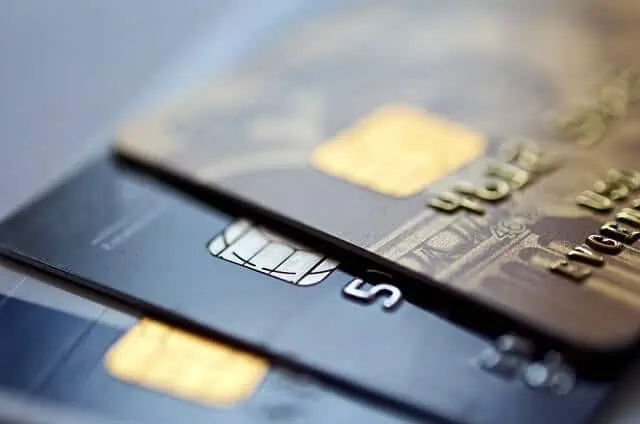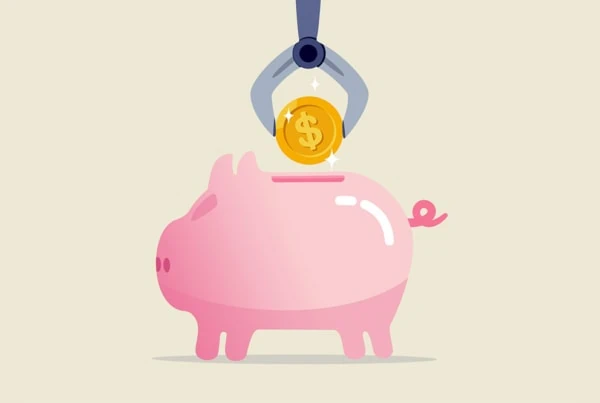Credit scoring models base 30% of your credit score on your overall credit utilization rate. This piece will explain a credit utilization rate, how to calculate your credit utilization, what credit utilization ratio is best for earning a high credit score, and more.
Featured Financial Products
Table of Contents
What is Credit Utilization?
Credit utilization refers to how much of your available revolving credit limits you use at a time. You might have one credit card or several lines of credit.
You can look at your credit utilization per card as well as your overall utilization. Your credit utilization ratio affects your credit score.
Related: Secured Credit Card vs. Unsecured: What’s the Difference?
What is Revolving Credit?
Revolving credit means your credit automatically renews when you pay off your debts. You have a credit limit, which represents the maximum you can spend.
You make purchases within your limit, which lowers the amount still available. When you pay some or all of your purchases back, the amount available for you to spend goes back up.
There is a minimum you are required to pay back each cycle to stay in good credit standing. Preferably, you pay your full statement balances to avoid owing interest.
The loop continues for as long as the account remains open. A credit card account is a popular example, as well as personal lines of credit.
Your utilization ratio with revolving credit, sometimes referred to as your revolving utilization, affects your credit score. Try not to use the majority of your line of credit consistently. Also, make sure to make your payments on time.
Revolving credit accounts can help you build a credit history. If used responsibly, they can also raise your credit score.
Revolving credit is open-ended, while nonrevolving credit (also called installment credit) is closed-ended. Close-ended credit is a one-time deal where you pay off a loan, and the account closes.
Mortgage loans and student loans are common types of nonrevolving credit. Diversifying your credit by having a mix of both types of loans is considered a positive for your credit score.
Related:
- 9 Best Credit Cards for No Credit History [Starter Credit Cards]
- 9 Best Credit Cards for Students with No Credit [Building Credit]
How Does Credit Utilization Work Per-Card vs. Total Utilization?
If you have multiple credit cards, you have per-card utilization rates and an overall utilization rate. Your per-card rate and total utilization rate both affect your credit score.
In general, you want low credit card utilization. However, spending nothing on one card and having a very high utilization score on another doesn’t appeal to lenders, even if your total utilization is low.
Keep your overall utilization low and don’t let the per-card utilization for any one card get too high either.
Related: A Closer Look at All The Types of Credit Cards & How They Work
What’s a Credit Utilization Ratio?
Your credit utilization ratio is the percentage of your available credit you’re using. People also refer to it as a utilization rate.
If you use a significant amount of your available credit, you have a high credit utilization ratio. You have a low credit utilization ratio when you use just a tiny amount of your available credit.
For some people, their credit utilization ratio is very similar each month. For others, credit utilization can vary each month substantially, depending on expenses.
Credit scores vary accordingly. It will only temporarily harm your credit if you spend more one month than you usually do.
How is Credit Utilization Calculated?
It just takes a little bit of addition and division to calculate your credit utilization. Let’s say you have two credit cards with different credit limits.
Card A has a credit limit of $1,000 and Card B has a credit limit of $5000. If you spend $200 on Card A during the month, it has a per-card credit utilization rate of 20%.
The same month you spend $1,300 on Card B. That credit card has a credit utilization rate of 26%.
To calculate your total utilization rate, you take your total credit card spending (add Card A’s balance with Card B’s balance) and divide it by your total credit limit (add Card A’s limit with Card B’s limit).
In this scenario, your total spending balance is $1,500, and your total credit limit is $6,000.
Your total credit utilization rate would be 25%.
Featured Financial Products
What’s a Good Credit Utilization Ratio?
It’s better to have a low credit utilization rate than a high one. It’s recommended to keep your credit utilization under 30% to maintain a high credit score.
The Consumer Financial Protection Bureau (CFPB) shows that consumers with very good credit scores of 750 or higher tend to use less than 10% of their overall available credit. Those with credit scores of 800+ often use only 5% or less of their available credit.
The lower your credit utilization, the better, but keep it above 0% (more on this later).
How Does Balance Reporting Work for Credit Utilization?
Most credit lines are reported to credit bureaus. The bureaus are also given additional information, such as your credit utilization ratio and whether or not you make on-time credit card payments.
A few credit lines aren’t always reported, such as being an authorized user on a credit card, which most, but not all, credit card issuers report.
Your credit card issuer, or another lender, sends credit bureaus the account balance on your credit report each month. It can take some time before credit reporting agencies receive the information.
While you may pay your entire credit card balances each month, that doesn’t necessarily mean your credit report will show a $0 balance on the account.
Keep credit utilization ratios low throughout the month, and you’ll be rewarded with a high credit score. If you make a substantial purchase early in the month, you can also pay some of your credit card bill early to keep your credit utilization ratio down.
However, you don’t need to worry too much unless you need to get approved for another credit line or insurance rate soon. Your credit score recalculates whenever a potential creditor requests it.
Having a higher-than-usual balance one month will temporarily affect your credit score and won’t have long-term effects.
Related: Best Debit Cards for Teens to Become Money Savvy
Should You Open Credit Cards to Increase Your Total Credit Limit, and Will This Improve Your Credit Score?
Opening additional credit cards is one method people use to increase their total credit limit. When you open new credit cards, it usually temporarily decreases your credit score but then improves your score in the long run.
The reason your score might temporarily go down is that the process often involves a hard inquiry for your credit report. If you’ve been pre-approved for a credit card, that is only a soft pull to your credit and shouldn’t affect your score.
Fortunately, unless you have several hard credit pulls within a short period, it should only slightly affect your credit and only for around a year or so. Long term, opening an additional credit card can improve your credit utilization ratio and earn you a better score.
Some people worry that having multiple credit cards will increase their chances of getting into credit card debt. As long as you don’t spend more money on credit cards than you have available in bank accounts, it shouldn’t be an issue.
Which Credit Lines Count Toward Your Credit Utilization?
Credit utilization rates are based only on revolving credit, not installment loans like mortgages, auto loans, student loans, or personal loans. While these loans don’t affect your credit utilization, they do affect your credit score.
Credit Cards
Credit cards are the most popular credit lines people refer to when discussing credit utilization. The credit limit on every credit card you own is included as part of your total available credit. Any money spent with your credit cards is part of your credit utilization percentage.
Lines of Credit
Personal lines of credit are less common than they once were but are still sometimes used. It’s considered a personal line of credit when a bank or different financial institution provides someone a line of credit to use, similar to a credit card.
This is a form of revolving credit because the money you pay back provides you with more to borrow. Like credit cards, you have a limit, minimum payments, and you can make payments early. Often, the limits are between $1,000 and $25,000.
A significant difference between personal lines of credit and credit cards is that lines of credit have limited terms, often three to five years. Meanwhile, credit cards are open until you choose to close them, if ever.
The interest rates for these lines of credit are typically a bit lower than credit card interest rates. Money borrowed with personal lines of credit affects your credit utilization ratio in the same way credit card usage does.
Note that a personal line of credit is different than a personal loan.
How Does Closing a Credit Card Impact Your Total Credit Utilization Rate?
When you close a credit card, your total credit card limits are lowered by the amount of the credit limit on the closed card. If you continue to spend the same cumulative amount on your other credit card(s), your credit utilization ratio will be higher, all things equal.
A good credit utilization ratio is as low as possible without being 0%. Since your total credit utilization rate will be higher, closing a credit card can negatively affect your credit score.
If you want to close a credit card because you worry that using it will put you into credit card debt, another option is to cut up your credit card or put it somewhere you can’t easily access.
After closing an account, if you need to improve your total credit utilization ratio and can’t reduce spending, consider getting a credit limit increase on a different card. This may or may not require a hard pull to your credit.
Is It Good to Have 0% Credit Utilization?
While you want a low credit utilization ratio, you don’t want that number to be 0%. It would help if you were using your credit card or cards, and credit card issuers want to see that you are using your card and making consistent payments.
In an ideal world, your overall credit utilization would be around 1%.
Is a Low Ratio of Credit Utilization Bad?
In short, no. Having a low credit utilization ratio is good rather than bad. People with utilization rates between 1% and 30% will have higher credit scores than people whose utilization is 0% or 31%+.
People who only use a small percentage of their available credit card balances show credit card issuers they spend responsibly.
Featured Financial Products
Related:
- Best Debit Cards for Kids to Manage Money
- Best Credit Cards for Kids: Building Credit & Money Habits Early
- 11 Best First Credit Cards [Beginners’ First Time Credit Cards]








![Check Out the New 401(k) Contribution Limits for 2026 [Save More for Retirement] 12 number blocks switching from 2025 to 2026.](https://youngandtheinvested.com/wp-content/uploads/2025-to-2026-blue-background-1200-600x403.webp)

![7 Best Microsavings Apps [Save Money, Reach Your Goals] 14 best microsavings apps](https://youngandtheinvested.com/wp-content/uploads/best-microsavings-apps-600x403.webp)
